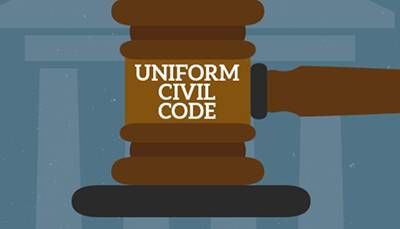Author: Aishi Das, 1st Year BBA LLB (hons), Amity University Kolkata
To the Point
India’s criminal justice system has witnessed a monumental overhaul in 2023. The reforms introduced aim to address the inefficiencies of archaic laws, enhance the protection of individual rights, and bring the legal framework in line with contemporary societal needs. This article provides an in-depth analysis of these reforms, their implications, and the judicial precedents that have paved the way for such changes.
Use of Legal Jargon
The 2023 reforms encompass significant amendments to the Indian Penal Code (IPC), Code of Criminal Procedure (CrPC), and the Indian Evidence Act (IEA). These amendments address modern issues like cybercrime, economic offenses, and the protection of vulnerable populations. Key legal terminologies involved include “mens rea” (the intention or knowledge of wrongdoing), “actus reus” (the physical act of the crime), “habeas corpus” (a legal action requiring a person under arrest to be brought before a judge), “locus standi” (the right or capacity to bring an action or to appear in a court), and “ex post facto” (laws applied retroactively).
The Proof
The necessity and impact of the 2023 criminal law reforms in India are evidenced by legislative debates, reports from expert committees, and interpretations by the judiciary. Empirical data from various case studies and statistical analyses of crime rates and judicial backlogs further substantiate these reforms.
Abstract
The 2023 reforms in India’s criminal laws signify a significant shift aimed at enhancing the efficiency, transparency, and fairness of the criminal justice system. This article comprehensively analyzes the amendments, highlighting their legal basis, intended outcomes, and the potential challenges in their implementation.
Key Amendments and Their Implications
Cybercrime Legislation:
Amendments: Introduction of stringent provisions to address offenses like hacking, identity theft, cyberstalking, and data breaches. New sections have been added to define and categorize various cybercrimes comprehensively.
Implications: These changes bring Indian cyber laws in line with global standards, provide clear guidelines for prosecution, and introduce higher penalties to deter cybercriminals.
Economic Offenses:
Amendments: Reforms include specific provisions targeting money laundering, fraud, embezzlement, and other white-collar crimes. The amendments aim to streamline the adjudication process and impose stricter penalties.
Implications: These measures are expected to deter economic crimes by ensuring quicker trials and imposing severe penalties, thereby protecting the financial integrity of the country.
Protection of Vulnerable Groups:
Amendments: Enhanced legal safeguards for women, children, and marginalized communities. This includes stringent anti-human trafficking laws, increased penalties for sexual offenses, and new provisions for victim protection and support.
Implications: These changes aim to create a safer environment for vulnerable groups, ensuring their rights are protected and that perpetrators of crimes against these groups face stringent consequences.
Judicial Reforms:
Amendments: Introduction of fast-track courts for specific categories of crimes, digitalization of court records, procedural simplifications, and measures to reduce judicial delays and backlog.
Implications: These reforms are expected to improve the efficiency of the judicial system, reduce case backlogs, and ensure timely justice.
Case Laws
Shreya Singhal v. Union of India (2015):
Relevance: This landmark judgment highlighted the need for clear and precise laws regarding cyber offenses. The Supreme Court struck down Section 66A of the IT Act, which was deemed vague and unconstitutional.
Impact: This case underscored the importance of specificity in cyber laws, influencing the precise definitions and categories introduced in the 2023 reforms.
Vijay Madanlal Choudhary v. Union of India (2022):
Relevance: The Supreme Court’s interpretation of money laundering laws in this case highlighted the necessity for robust legal frameworks to combat economic offenses.
Impact: This judgment influenced the 2023 amendments by emphasizing the need for stringent provisions and faster adjudication processes for economic crimes.
Nirbhaya Case (2012):
Relevance: The brutal gang rape and murder of a young woman in Delhi led to widespread public outcry and significant reforms in sexual offense laws.
Impact: The 2023 amendments build upon the earlier reforms introduced post-Nirbhaya, introducing even more stringent penalties and comprehensive protective measures for victims of sexual offenses.
Conclusion
The 2023 criminal law reforms in India signify a progressive and forward-thinking approach to contemporary challenges in the legal system. By modernizing outdated laws and introducing comprehensive measures to protect vulnerable groups, combat cyber and economic crimes, and streamline judicial processes, these reforms promise a more effective and just criminal justice system. However, the successful implementation of these reforms will require sustained efforts in legal education, infrastructure development, and continuous monitoring.
FAQ
1. What are the major changes introduced in the 2023 criminal law reforms?
The reforms include stringent cybercrime laws, enhanced penalties for economic offenses, better protection for vulnerable groups, and judicial process improvements.
2. How do the new laws address cybercrime?
The amendments introduce clear definitions and categories for cyber offenses, enhance penalties, and align Indian laws with global standards.
3. What impact will these reforms have on economic offenses?
The reforms aim to expedite the adjudication of economic crimes and impose stricter penalties, thus deterring such offenses.
4. How are vulnerable groups protected under the new laws?
The reforms introduce stringent anti-human trafficking laws, increase penalties for sexual offenses, and establish mechanisms for victim protection and support.
5. What judicial reforms are included in the 2023 amendments?
Reforms include the introduction of fast-track courts, digitalization of court records, and procedural simplifications to reduce judicial delays and backlog.
6. Are there any landmark cases that influenced these reforms?
Yes, landmark cases like Shreya Singhal v. Union of India, Vijay Madanlal Choudhary v. Union of India, and the Nirbhaya case have significantly influenced the recent reforms.


